What you see in the pre-draft process isn't always what you get. There's always a player who goes from potential star to post-draft bust, but who among each franchise's history is the biggest bust of them all?
NFL Nation reporters have gone back as far as 1979 to find every team's draft dud.
AFC East | AFC North| AFC South | AFC West
NFC East | NFC North | NFC South | NFC West
AFC EAST

Buffalo Bills
QB J.P. Losman | No. 22 overall, 2004
The Bills' ongoing 17-year playoff drought has been littered with first-round busts, from offensive tackle Mike Williams in 2002 to defensive end Aaron Maybin in 2009 to quarterback EJ Manuel in 2013. But the Losman pick seems to stick in the craw of Bills fans more than any other. With Eli Manning, Philip Rivers and Ben Roethlisberger already off the board, the Bills took receiver Lee Evans at No. 13 and then traded their 2005 first-round pick to get Losman at No. 22. Losman saw his first significant playing time in 2005, starting eight games while completing a horrid 49.6 percent of his passes for a 64.9 quarterback rating. Had the Bills kept their top 2005 selection, they could have used it on Aaron Rodgers. -- Mike Rodak

Miami Dolphins
DE Dion Jordan | No. 3 overall, 2013
The Dolphins traded up nine spots to select Jordan, who was projected to be the draft's best defensive player at the time. Four years later, Jordan has had multiple league suspensions and hasn't played in a game since 2014. He was released two weeks ago and recently picked up by Seattle. The Dolphins could have stayed in their original spot at No. 12 and selected cornerback Desmond Trufant or offensive lineman Kyle Long and kept their second-round pick. -- James Walker

New England Patriots
CB Chris Canty | No. 29 overall, 1997
This was the first year after Bill Parcells departed the franchise for the Jets, and the top pick was Canty, the 5-foot-9, 185-pound cornerback from Kansas State who lasted just two seasons. Patriots Hall of Famer Troy Brown once shared the story that he was told to ease up on Canty in practice. Had the Broncos not selected DL Trevor Pryce the pick before, the Patriots probably would have nabbed Price, who went on to have a 14-year NFL career, and the story would have had a happier ending. -- Mike Reiss

New York Jets
OLB Vernon Gholston | No. 6 overall, 2008
The Jets have had many busts in their inglorious drafting history, but Gholston stands alone. He was a pass-rushing linebacker who didn't record a single sack in his career, which lasted only three seasons. The Jets got fooled by his amazing combine workout and his deceiving stats at Ohio State. Gholston was finished by age 25, but he made $18 million in his brief, ill-fated career. -- Rich Cimini
AFC NORTH

Baltimore Ravens
S Matt Elam | No. 32 overall, 2013
Elam came to the Ravens with expectations he would help fill the void left by Ed Reed's departure. He left with one career interception and two stints on injured reserve. An arrest in February, which included possession of 126 grams of marijuana and three grams of oxycodone, according to police, became the final stamp on his underachieving time in Baltimore. Selected three months after the Ravens won the Super Bowl, Elam started 26 games before being benched midway through his second season. He struggled to cover receivers deep and make tackles. Of all the 21 players selected in the first round by the Ravens, no one disappointed quite like Elam. -- Jamison Hensley

Cincinnati Bengals
QB Akili Smith | No. 3 overall, 1999
Picking Smith at No. 3 overall after just one productive season at Oregon was bad enough, but what the Bengals missed out on was even worse. The Saints offered the Bengals nine draft picks to trade back in the hopes of obtaining running back Ricky Williams. The Bengals turned down the offer to select Smith, who then missed most of training camp because of a contract dispute. The Smith era didn't get much better. He was benched for good in just his second season and was out of the league after just four seasons, throwing only five career touchdowns and finishing with a 3-14 record as a starter. -- Katherine Terrell

Cleveland Browns
CB Justin Gilbert | No. 8 overall, 2014
Gilbert was the first choice in the Ray Farmer-Mike Pettine era. The Browns traded down, then up to acquire him. Gilbert was supposed to be a key part of Pettine's defensive approach, but the Browns learned they had an immature, disinterested player. Gilbert started three games and produced very little before being traded within the division to Pittsburgh after two seasons in Cleveland. -- Pat McManamon

Pittsburgh Steelers
LB Huey Richardson | No. 15 overall, 1991
The most confounding bust in Steelers history had a stat line unthinkable for a first-round pick: zero tackles and zero sacks in 16 career games. The Steelers selected the All-American out of Florida to bolster the pass rush, but after one season, coach Bill Cowher had seen enough and traded him. Richardson was soon out of the league after spot duty with the Washington Redskins and New York Jets that next season. As the Steelers transitioned from Chuck Noll to Cowher, Richardson was supposed to be a building block. The two sides didn't even break ground together. -- Jeremy Fowler
AFC SOUTH
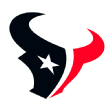
Houston Texans
QB David Carr | No. 1 overall, 2002
Carr has the distinction of being the first player drafted by the Texans before the franchise's first season in 2002. But in his first year, he was sacked 76 times, an NFL record. Carr spent only five seasons with the Texans before Houston moved on and traded for Matt Schaub. -- Sarah Barshop
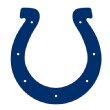
Indianapolis Colts
QB Jeff George | No. 1 overall, 1990
George was supposed to be what Peyton Manning was for the Colts before Manning revived the franchise in 1998. George had a cannon of an arm, but his inability to take advantage of it, not to mention his bad attitude, didn't help the Colts. George completed only 57 percent of his passes, with 46 interceptions to just 41 touchdowns, and finished 14-35 as a starter in his four seasons in Indianapolis. Right behind George on this list is defensive lineman Steve Emtman, the No. 1 overall pick in 1992, who missed 30 games because of injuries in his three seasons with the Colts. -- Mike Wells
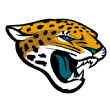
Jacksonville Jaguars
QB Blaine Gabbert | No. 10 overall, 2011
The Jaguars gave up two draft picks to Washington to move up six spots to take Gabbert. The team cut supposed starter David Garrard five days before the 2011 season began, thrusting Gabbert into the role. He didn't exactly flourish. Gabbert went 5-22 as a starter and threw 22 touchdown passes and 24 interceptions in 28 career games. He threw for more than one touchdown in a game only four times. He missed games because of injuries to his shoulder, forearm, thumb and hamstring and a cut on his hand. He lost his job for good midway through the 2013 season, and the team traded him to San Francisco for a sixth-round pick and a conditional fifth-round pick. -- Michael DiRocco
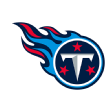
Tennessee Titans
QB Jake Locker | No. 8 overall, 2011
The pick was a big surprise after Locker's final year at Washington sank his draft stock for many scouts. After a year behind Matt Hasselbeck, Locker started just 23 of 48 total games in his three seasons as the Titans QB because of a variety of injuries. He never overcame his accuracy issues, completing just 57.5 percent of his passes. He might still be in the NFL as a backup, but when his rookie contract expired, he retired. -- Paul Kuharsky
AFC WEST

Denver Broncos
DT Ted Gregory | No. 26 overall, 1988
The legend goes that Gregory was selected almost sight unseen by the team. He never played a game for the Broncos. He was traded to the Saints before the start of his rookie season and played just three games in his NFL career. Two honorable mentions for a Denver draft bust: WR Marcus Nash, the first-round pick in 1998 (30th overall), who had four receptions as a rookie in a short tenure, and Jarvis Moss, taken 17th overall in 2007, who had two starts in five-year career. -- Jeff Legwold
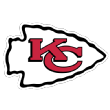
Kansas City Chiefs
QB Todd Blackledge | No. 7 overall, 1983
The Chiefs had more than their share of draft busts during the 1970s and 1980s, which explains why they made the playoffs only twice during those decades. They drafted worse players than Blackledge in the first round, but passed over future Hall of Fame quarterbacks Jim Kelly and Dan Marino to get him. Unfair or not, that gives Blackledge his own spot in the Chiefs' draft Hall of Shame. He started 24 games for the Chiefs in five years and threw more interceptions (32) than touchdowns (26). -- Adam Teicher
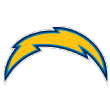
Los Angeles Chargers
QB Ryan Leaf | No. 2 overall, 1998
Immaturity and injuries did not allow Leaf to reach his vast potential with the Chargers. A Washington State product, he finished with a 4-17 career record as a starter for the Chargers (4-14) and the Cowboys (0-3). In three NFL seasons, Leaf threw just 14 touchdown passes and 36 interceptions, was sacked 65 times and completed just 48.4 percent of his passes. -- Eric D. Williams

Oakland Raiders
QB JaMarcus Russell | No. 1 overall, 2007
For the Raiders, the list begins and ends here. Maybe he could have thrived in a more structured environment. Perhaps he would have been more disciplined off the field had he not lost his uncle Ray Ray Russell in 2009. What if the Raiders had, as then-coach Lane Kiffin had as a plan, drafted WR Calvin Johnson No. 1 overall and then QB Trent Edwards in the second round? Russell, who held out as a rookie and dealt with weight and off-the-field issues, was just 7-18 as a starter and was unceremoniously cut by Oakland after he put "JaBustus" and "purple drank" into the Raiders' lexicon. Russell was with Oakland for just three seasons, but his effect was felt until recently. A case could be made that Russell is the biggest draft bust in NFL history. -- Paul Gutierrez
NFC EAST

Dallas Cowboys
CB Rod Hill | No. 25 overall, 1982
The Cowboys thought they had another small-school find on their hands, like they had with Rayfield Wright and Ed "Too Tall" Jones before him, but Hill, whose college career started at Iowa before transferring to Kentucky State, was traded to Buffalo in 1984. He never started a game in two years and fumbled a punt in the 1982 NFC title game. Coach Tom Landry said he wasn't convinced Hill was the right pick from the start. "It was a very high-risk pick there," Landry said in 1987. "There`s no surprise when you miss on a Rod Hill, because you've taken a real calculated risk." -- Todd Archer

New York Giants
TE Derek Brown | No. 14 overall, 1992
Brown was supposed to be an all-purpose tight end. That never materialized. A first-round pick is supposed to produce more than 401 yards and one receiving touchdown for his career. Brown had 11 receptions for 87 yards and no touchdowns with the Giants. That more than qualifies as a colossal bust. -- Jordan Raanan

Philadelphia Eagles
OT Kevin Allen | No. 9 overall, 1985
Former coach Buddy Ryan was quoted as saying the only way Allen could be useful is "if you want someone to stand around and kill the grass." Allen played just one rocky season in the pros. He tested positive for cocaine after reporting to training camp in 1986 and was released in October. Not long after, Allen was charged with rape and later pleaded guilty to sexual assault. -- Tim McManus

Washington Redskins
QB Heath Shuler | No. 3 overall, 1994
It became clear early on that Shuler faced a tough adjustment to the NFL game, and experts criticized his ability to read a defense. Shuler did start 13 games in his first two years, but was then beat out by Gus Frerotte, a seventh-round pick in 1994. Shuler was traded to New Orleans for two draft picks after the 1996 season, but a serious foot injury (followed by multiple surgeries) eventually ended his career. He was done with the NFL by the time the 1998 season began. In his Redskins' career, Shuler had a 4-9 record with 13 touchdowns and 19 interceptions. -- John Keim
NFC NORTH

Chicago Bears
RB Cedric Benson | No. 4 overall, 2005
How much time do you have? The options here are endless, but we'll go with Benson, who lasted only three seasons in Chicago before being cut in the 2008 offseason after a string of off-the-field incidents. The Bears wanted Benson to replace veteran tailback Thomas Jones, but Benson struggled in the lead role in 2007, rushing for only 674 yards (3.4 yards per carry) and four touchdowns. To be fair, Benson has plenty of company. The Bears also whiffed on first-round picks Curtis Enis, Cade McNown, David Terrell, Michael Haynes, Chris Williams, Gabe Carimi and Shea McClellin -- and that's just since 1998! The jury is also out on Kyle Fuller and Kevin White, but both are trending in the wrong direction. It's no wonder the Bears have reached the playoffs only five times since Mike Ditka left in 1992. -- Jeff Dickerson

Detroit Lions
QB Andre Ware | No. 7 overall, 1990
The Heisman Trophy winner from Houston was thought to be the long-term solution for Detroit at quarterback. He was anything but. Ware played in 14 games over four seasons with the Lions and was largely ineffective. He completed 51.6 percent of his career passes, including two seasons below 50 percent, and threw for only 1,112 yards, five touchdowns and eight interceptions in his career. To put it in perspective, Matthew Stafford has thrown for five touchdowns in a game four times in his career. Ware was out of the NFL after the 1993 season. -- Michael Rothstein
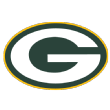
Green Bay Packers
OT Tony Mandarich | No. 2 overall, 1989
Troy Aikman went first, and immediately after Mandarich went Barry Sanders, Derrick Thomas and Deion Sanders. That's four Hall of Famers and one serious bust in the top five of that draft. Mandarich came into the league as one of the most celebrated offensive linemen in draft history, yet he didn't start a single game as a rookie. He played in 31 games over the next two seasons but never played again for the Packers after the 1991 season. He later admitted to using steroids to build his 6-foot-5, 311-pound NFL body. -- Rob Demovsky

Minnesota Vikings
WR Troy Williamson | No. 7 overall, 2005
The Vikings' immediate attempt to replace Randy Moss, with the pick they received from the Oakland Raiders in the trade for Moss, was an abject failure. Williamson wowed scouts with his deep speed before the draft but consistently struggled to hang onto the ball and never caught more than 37 passes in three seasons with the Vikings. He was in Jacksonville by 2008 and out of the league by 2010. -- Ben Goessling
NFC SOUTH

Atlanta Falcons
RB Tony Smith | No. 19 overall, 1992
The running back from Southern Mississippi was the Falcons' second of two first-round picks. The Falcons drafted Smith with the pick they acquired when they traded his former college teammate, Hall of Fame quarterback and 1991 second-round pick Brett Favre, to Green Bay. Smith played in 33 career games with six starts and had just 329 rushing yards and two touchdowns on 87 carries, averaging 3.8 yards per carry. His only career carries came during his rookie season. Smith went on to brief stints in Carolina and Philadelphia but didn't stick on either roster while battling injuries. -- Vaughn McClure

Carolina Panthers
WR Rae Carruth | No. 27 overall, 1997
The wide receiver out of Colorado was a bust on and off the field. On the field, Carruth had only 62 catches for four touchdowns in three seasons. But where he really became a bust was off the field. His career ended in 1999 when he was charged with conspiring to murder the woman carrying his child. He later was found guilty and remains in prison. That arguably was the single-worst moment in franchise history. -- David Newton

New Orleans Saints
P/K Russell Erxleben | No. 11 overall, 1979
This pick is as much a part of Saints infamy as the bags that fans used to wear over their heads. No kicker or punter has been drafted higher than Erxleben over the past 50 years in the NFL, and he was a total bust. A strong-legged All-American punter at Texas, Erxleben still holds a share of the NCAA record for longest field goal off a tee (67 yards). But he didn't even win the kicking job in New Orleans and made just 4 of 8 field goal attempts in his career, while spending five seasons as the Saints' punter. To make matters worse, Erxleben threw a game-losing interception in overtime of his first game against the Falcons after a snap sailed over his head. -- Mike Triplett
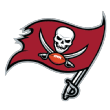
Tampa Bay Buccaneers
RB Bo Jackson | No. 1 overall, 1986
The Bucs have had a lot of busts over the years, but Jackson takes the cake because he never played for them. The Bucs couldn't have screwed this up any worse. Jackson was ruled ineligible during his senior baseball season at Auburn for accepting a plane trip from the Bucs to work out for the team. He has long felt the Bucs deliberately tried to make him ineligible, telling him that they had cleared his visit with the NCAA. He refused to play for Tampa and then-owner Hugh Culverhouse, who did not have a very good reputation for his treatment of players. After the Bucs' rights to Jackson expired in 1987, he suited up for the Oakland Raiders. -- Jenna Laine
NFC WEST

Arizona Cardinals
OG Jonathan Cooper | No. 7 overall, 2013
Cooper was supposed to be the prized cornerstone of then-new head coach Bruce Arians' first offensive line, and Cooper was -- until he broke his leg in the third preseason game of his rookie season. Cooper was never the same player, unable to overcome the mental hurdles of suffering a major injury and subsequently returning from it. He started 11 games over the next two seasons before getting traded to New England in March 2015 in a deal for OLB Chandler Jones. He played for the Patriots, Browns and Cowboys, who signed him to a one-year deal last month. -- Josh Weinfuss
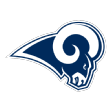
Los Angeles Rams
RB Lawrence Phillips | No. 6 overall, 1996
Phillips, a two-time national champion with the Nebraska Cornhuskers, entered the draft with transcendent talent but also some serious character issues. The Rams saw past that. They liked Phillips so much that they traded their star running back, Jerome Bettis, the day of the draft. But Phillips was released before even finishing his second season in St. Louis. He didn't produce on the field and found himself in constant trouble off it. He spent some time with the Dolphins and 49ers, played a stint in the Canadian Football League and was continually in and out of jail. In January 2016, he committed suicide inside his prison cell. -- Alden Gonzalez
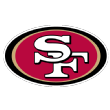
San Francisco 49ers
QB Jim Druckenmiller | No. 26 overall, 1997
In search of the successor to Steve Young, and against the advice of legendary coach Bill Walsh, the 49ers turned to the big, strong-armed Druckenmiller. Walsh, who was working in a consulting capacity at the time, advocated for Jake Plummer, but the 49ers were infatuated with Druckenmiller's measurables. As it turned out, Druckenmiller was the first in a string of failed attempts to find the franchise's next great quarterback. He played in just six games, attempting 52 passes before the Niners traded him to Miami in 1999. -- Nick Wagoner

Seattle Seahawks
QB Rick Mirer | No. 2 overall, 1993
The Seahawks had plenty of draft busts before their recent run of success, but the final decision came down to Mirer and linebacker Aaron Curry, the No. 4 overall pick in 2009. Mirer gets the nod because of the historically bad numbers he put up at the most important position in sports. Since the merger, 126 quarterbacks have attempted at least 2,000 passes. Only one (Dan Pastorini) posted a worse passer rating than Mirer (63.5). Among that group, Mirer ranks 114th in completion percentage (53.26) and 125th in YPA (5.86). Mirer is the only quarterback since the merger to attempt at least 2,000 passes, post a completion percentage worse than 55.0 and average fewer than 6.0 YPA. Those numbers give him the edge over Curry. -- Sheil Kapadia
